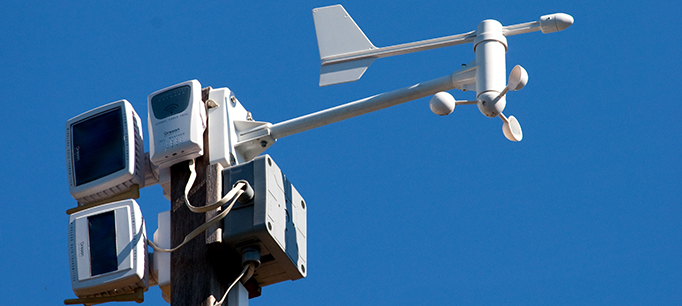What does the future hold for California’s weather and climate? Is drought the new normal? And what about La Niña? We talked to Daniel Swain—founder of the popular California Weather Blog and a Stanford University climate scientist—about our volatile climate.
 PPIC: La Niña is looming, bringing the possibility of another dry winter. What issues does it raise for the state?
PPIC: La Niña is looming, bringing the possibility of another dry winter. What issues does it raise for the state?
Daniel Swain: It’s ingrained in California folklore that El Niño means rain and La Niña means no rain. Climate scientists often emphasize that the effects of both can be highly variable in California. El Niño and La Niña do give us much more predictability than we would have in a typical year, but that’s not always enough to help us predict exactly what’s going to happen. Last year we had a bit of a predictive failure when a very strong El Niño didn’t translate to extremely wet conditions for California as a whole. Northern California got a break this winter, with near-average precipitation. It didn’t actually earn back its accumulated water deficit, but at least it didn’t get larger. The La Niña situation is even more uncertain, bringing a wider range of possible outcomes than with El Niño. But it’s reasonable to say there is an increased risk of dry conditions this coming winter. So La Niña is certainly not good news. Another dry and warm winter would be bad news for the environment and groundwater, because these systems haven’t recovered from previous dry winters.
PPIC: Talk about the role of climate change in the California drought.
DS: There are two things to think about: what’s going on with precipitation and with temperature. We’ve seen record warmth by a really wide margin for most of the latest drought. It’s been a much more severe drought than it would have been with cooler temperatures and the same amount of rain. These extremely warm temperatures are clearly linked to global warming. The question of precipitation is much harder to answer. There hasn’t been much of a trend in California’s average precipitation. But that doesn’t mean the character of precipitation isn’t changing—in fact, we’re seeing an increase in atmospheric patterns associated with both very dry and very wet conditions. The central cause of our really dry conditions during the present drought is the “ridiculously resilient ridge” anchored over the Pacific, which has been keeping big storms away. The question of whether or not global warming affects the risk of very low precipitation years is essentially equivalent to asking whether climate change has increased the chance of big ridges like this—and recent research suggests that it does. Between our high confidence in the role of rising temperatures and the less-certain linkage to these ridge patterns, we can say there is a substantial climate change fingerprint on this drought.
PPIC: Climate scientists have made it clear that we can’t attribute a single event to climate change, but at what point do we start talking about “a new normal” in California?
DS: It’s quite clear that global warming is rarely if ever the singular cause of an extreme climate event—there is always some degree of weather or randomness involved. A more important question is: does global warming influence the likelihood of a specific event? We have high confidence that global warming has increased the likelihood of drought in California. It’s clearly not the only factor, but asking the question in this way provides a useful frame for evaluating risk. As for “a new normal,” it’s pretty unlikely that California’s future will be characterized by a permanent shift to low rainfall. The state’s climate is already characterized by extremes—we see a lot of year-to-year variation, particularly in precipitation. A more useful way to think about our certainly warmer future is to ask whether the driest or wettest years are occurring more frequently or more intensely. Having wider swings between drought and flood—that might actually be the new normal.
One bit of good news is that we’re getting a lot better at predicting atmospheric rivers, which bring our biggest rain storms. We may be able to use these much improved forecasts to allow more leeway in managing water storage in reservoirs. Our increasing ability to forecast weather is going to give us new ways to address our water challenges—to better manage increased risk.
Read California’s Water: Climate Change and Water (from California’s Water briefing kit, April 2015) Read Daniel’s California Weather blog


